What's New
Displaying results 3311 - 3320 of 4052
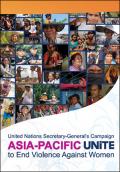
Resource | Publications,
Launched in 2008, United Nations Secretary-General Ban Ki-moon's UNiTE to End Violence against Women campaign is a multi-year effort aimed at preventing and eliminating violence against women and girls in all parts of the world. It was developed to support and strengthen efforts in the region to end violence against women and girls. Asia-Pacific UNiTE aims to raise public awareness and to increase political will and resources for preventing and responding to violence against women and girls in the Asia-Pacific region. The campaign seeks to create a favourable and supportive environment for governments, in partnership with civil society, experts, entities of the United Nations system and other stakeholders to fulfill existing policy commitments.
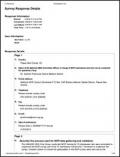
Resource | Publications,
The National Composite Policy Index (NCPI) data submitted by countries was validated for internal consistency and completeness of the response by UNAIDS/Geneva. Illogical values were corrected; countries were contacted in cases of substantial missing data and multiple, non-consolidated NCPI submissions. The PDF files posted contain the validated NCPI data.
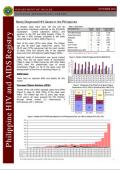
Resource | Fact Sheets,
In October 2010, there were 104 new HIV Ab seropositive individuals confirmed by the STD/AIDS Cooperative Central Laboratory (SACCL) and reported to the HIV and AIDS Registry (Table 1). This was a 30% increase compared to the same period last year (n=80 in 2009) [Figure 1].
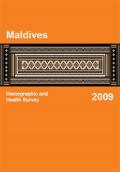
Resource | Publications,
The 2009 Maldives: Demographic and Health Survey was designed to provide data to monitor the population and health situation in Maldives. Specifically, the MDHS collected information on fertility levels and preferences, marriage, sexual activity, knowledge and use of family planning methods, breastfeeding practices, nutrition status of women and young children, childhood mortality, maternal and child health, and awareness and behaviour regarding AIDS and other sexually transmitted infections. At the household level, the survey collected information on domains of physical disability among those age 5 and older, developmental disability among young children, support for early learning, children at work, the impact of the tsunami of 2004, health expenditures, and care and support for physical activity of adults age 65 and older. At the individual level, the survey assessed additional features of blood pressure, diabetes, heart attack, and stroke.
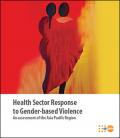
Resource | Publications,
Gender-based violence (GBV) is well recognised as a human rights violation and a public health problem with legal, social, cultural, economic and psychological dimensions. Violence against women and girls cuts across class, race, religion and ethnicity and is today no longer viewed as a private matter. Among the impacts are a wide range of health consequences including sexually transmitted infections (STIs), HIV and AIDS, unintended pregnancies, psychological disorders, deprival of sexual and reproductive rights and diminished well-being. The severe costs of violence against women incurred by children, families, communities and the state are thus well demonstrated and thoroughly documented by the data.
A multi-sectoral response is required to offer comprehensive support to women who suffer violence. In particular, it is probable that no other sector has a greater opportunity to aid women survivors of violence than the health sector.
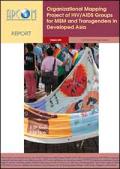
Resource | Publications,
Asia has all the ingredients for a full-blown epidemic among men who have sex with men and transgenders. Evidence points to an increasing prevalence among men who have sex with men and transgenders (MSM/TGs) in many Asian countries. In many countries, evidence points to a sexual flip in the mode of transmission, with MSM/TGs becoming the face of the epidemic than heterosexuals.
As HIV prevalence rise among MSM/TGs in Developed Asia, it becomes crucial to map out existing HIV/AIDS services for MSM/TGs and scope the capabilities and engagements of existing organizations. This baseline project aims to:
1. Produce an organizational database of groups, community organizations, and institutions that provide HIV/AIDS services for MSM/TGs in their respective countries or territories, from prevention, treatment, care and support to stigma reduction advocacy work;
2. Aggregate findings on the state of preventive measures for MSM/TGs that are being implemented in the target countries and territories and identify the strengths and weaknesses of these responses, and;
3. Identify MSM/TG-related issues to present a general and qualitative analysis of situation of the community in their respective countries and cull needs for further action.

Resource | Presentations,
Costab is a database costing tool that introduces a new level of sophistication into HIV costing and analysis.

Resource | Presentations,
-10 Sheet Excel Model - But Just 4 Main Sections
-Uses Who Cost Categories- Not Flexible
-Simple Unit Cost Calculator- But Big
-Model Readily Extendable And Could Be Used, Eg To Calculate The Quantity Of Drug Types
-All Pages Rolled Up For Easy Data Control
-Dont Have To Use All Model
-Companion Model For Costab
-Major Benefit- Calculation Of Regimens

Resource | Presentations,
-Designed specifically to support the Activity Based Costing Approach
-Logical menu-driven sequence of steps
-Allows mapping of expenditure types to government accounting framework
-Supports complete cycle of planning, budgeting, operations and evaluation
-Inflation capability at users discretion
-Financing gap analysis

Resource | Presentations,
Objectives:
• To assess the costing tools commonly used in countries in Asia-Pacific based on a set of technical and user criteria developed at the meeting.
• To develop harmonized guidance for countries on appropriate tools for costing the HIV response depending on intended purpose.
• To consider next steps for country level coordination for dissemination of costing guidance and piloting costing tools, and for identifying technical needs and ensuing technical support and capacity building.
• To identify organizations that will take forward any further technical development of costing models, and the ensuing technical support and capacity building.





